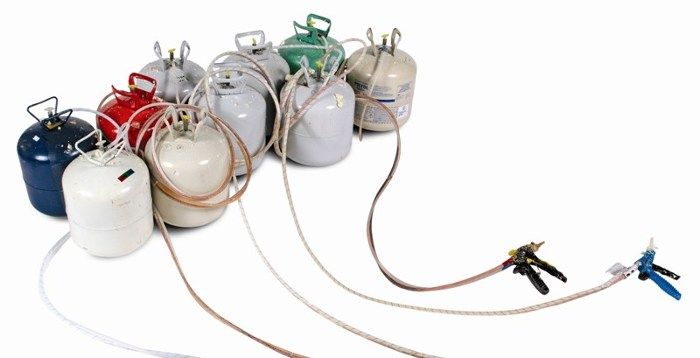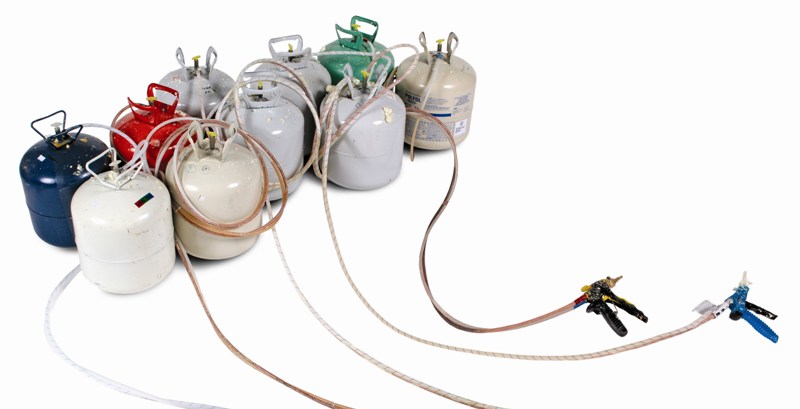
I recently tested two-part spray-foam kits for Fine Homebuilding. Surprisingly, finding out how to dispose of the spent tanks and hoses proved to be the most difficult part of my testing because the rules are very different depending on where you live. Makers skirt the issue by saying “disposal must be in accordance with federal, state and local laws.”
MSDS “Inconclusive”
My state’s (Connecticut) Department of Environmental Protection couldn’t say whether the material was considered hazardous waste without testing, because the Material Safety Data Sheets proved inconclusive.
‘Liquid leftovers’ are the biggest problem
One forthcoming spray-foam company rep told me (off the record) that liquid leftovers are the biggest potential problem, so she suggested dispensing any remaining liquids into a waste container and letting them dry. Once the liquid chemical is gone, you should invert the tank and bleed off the propellants, which are a mix of nitrogen and the refrigerant R134A.
My own experience:
I took one of the kits to my local transfer station, and after a little head-scratching, they told me to bleed off all the gas to eliminate any explosion hazard, then to toss the empty tanks into the metals recycling pile and the gun and hoses in the trash.
I’d love to hear how anybody who has used these kits ended up disposing of them.
Fine Homebuilding Recommended Products
Fine Homebuilding receives a commission for items purchased through links on this site, including Amazon Associates and other affiliate advertising programs.

Handy Heat Gun

8067 All-Weather Flashing Tape

Affordable IR Camera

Two-part disposable spray foam kits are perfect for big air-sealing and small insulating jobs, but the rules for disposing of the spent tanks seem somewhat arbitrary.



























View Comments
I can't say that I've disposed of those particular cylinders ... propane tanks, sure, but foam components, no.
Yet, I can't see any special hazard from the chemicals. The tanks themselves are another matter.
It's no coincidence that the trash collector has one of the most hazardous jobs around. Compressed gas isn't a good thing to run through the crusher. So, my first concern would be to ensure that the cylinders can never again hold pressure.
Taking them out to the range and putting a fer 30-06 steel rounds through them is certainly ONE way to do it. Removing the fittings -if possible - is another.
A greater risk is when the old cylinders get re-tasked. I mean, there are folks over in Breaktime who think it's just ducky to fill disposable propane cylinders with compressed air! Just imagine the local meth maker who is already tampering with propane tanks - you can be sure he'll try using these tanks to steal ammonia as well.
Just vent off the refrigerant? Now, there's a conundrum. It needs to be removed, for safety's sake (OSHA might even require it) ... but EPA rules threaten you with a $20K fine if you do. Put THAT in your hemp pipe and smoke it!